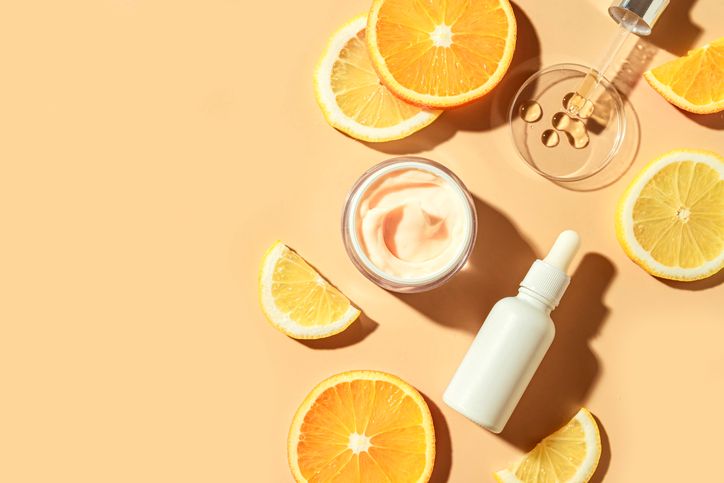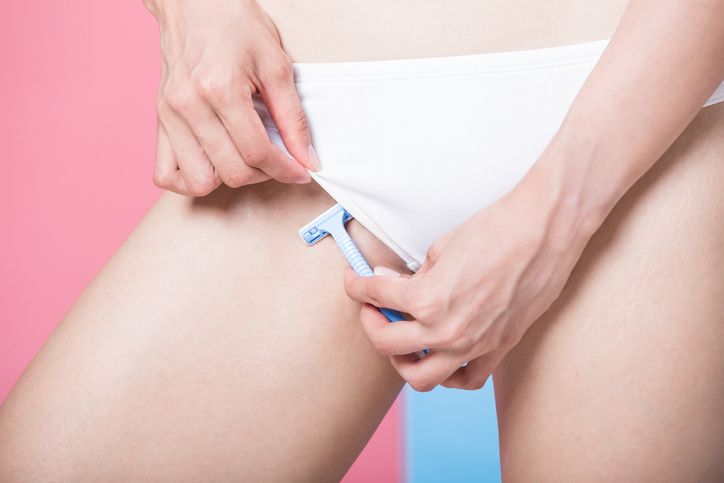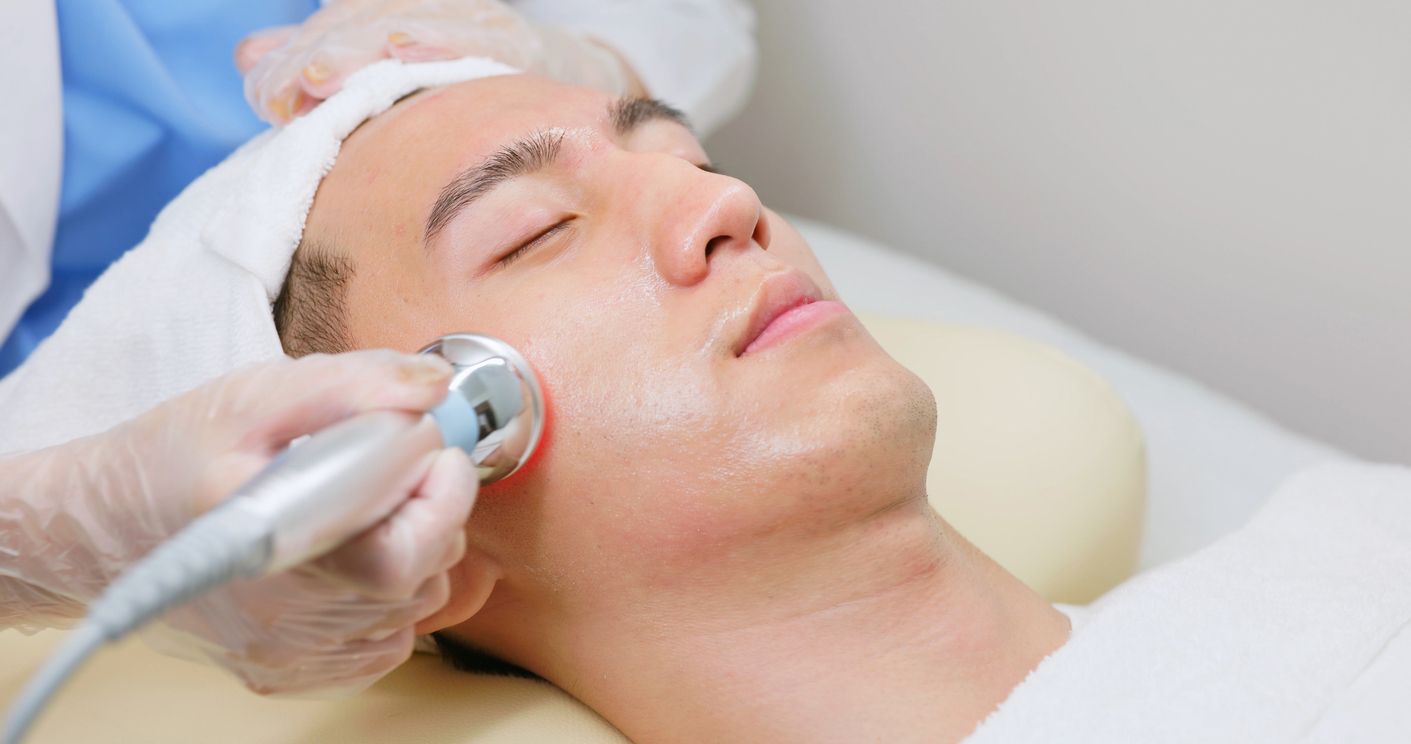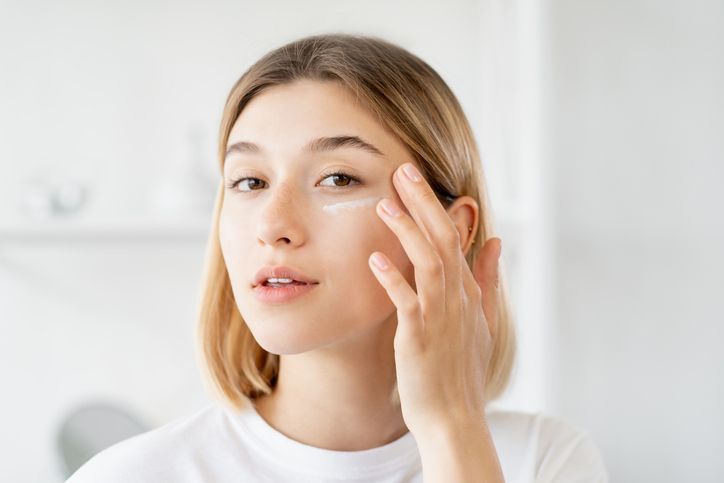- Home
- Trend
- Weight Loss Strategies
- Acne Tips
- Hair Health Information
- Blemish Removal Tips
- Acne Scar Removal Tips
- Muscle Building Techniques
- Intimate Care Tips
- Postpartum Intimate Care
- Eye Bags Wiki
- Tips for Face Slimming
- Secret of Permanent Hair Removal
- Breast Enlargement Tips
- Cure to Snoring
- Marionette Lines
- Skin-Tightening Secrets
Have you ever stepped into a sweltering environment only to feel your skin suddenly turn uncomfortable, itchy, and bumpy? If you’ve ever experienced sweat spots—or heat rash—you know how quickly a simple sweat-induced irritation can escalate into an unbearable condition. But what if the very sweat that cools us down could also trap us in a cycle of discomfort?
Sweat Spots: What They Are and Why They Occur

Sweat spots are small, localized areas on the skin where sweat accumulates, leading to discomfort and irritation. These spots typically form when sweat is trapped in the sweat glands or ducts, often resulting in conditions like heat rash or prickly heat. Sweat spots can develop on any part of the body where sweat glands are present, but they are more common in areas with poor airflow, friction, and heat exposure.
The sweat glands, particularly the eccrine sweat glands, play a major role in regulating body temperature. These glands release sweat through ducts that travel to the surface of the skin. However, in hot and humid conditions, the sweat ducts may become blocked due to excessive sweating, tight clothing, or other environmental factors. When this happens, sweat cannot evaporate, causing it to accumulate beneath the skin, resulting in sweat spots.
While sweat spots are commonly associated with heat rash or prickly heat, they can also lead to more severe forms like miliaria rubra, where the trapped sweat becomes inflamed, leading to red, itchy bumps.
5 Heat Rash Symptoms To Help You Get Heat Rash Diagnosed

Heat rash, commonly known as sweat spots or prickly heat, is a skin condition that occurs when sweat gets trapped beneath the skin's surface, leading to irritation and inflammation. Identifying the symptoms early can help you manage the condition and seek appropriate treatment. Here are the key symptoms to watch for:
1. Itchy, Bumpy Skin
One of the hallmark signs of heat rash is the appearance of small, red or pink bumps on the skin. These bumps may cluster together, creating patches of irritated skin. The areas most prone to sweat accumulation—such as the neck, back, chest, underarms, groin, and inner thighs—are often the first to show signs of sweat spots.
The bumps may vary in size, but they all share a common characteristic: the discomfort they cause when touched, especially when friction or sweat exacerbates the irritation.
2. Prickly or Stinging Sensation
A telltale symptom of heat rash is the distinctive prickling or mild stinging sensation that comes along with the bumps. The irritation from sweat spots often leads to a feeling described as “prickly heat,” which is exactly why the condition got its name.
This sensation can become more intense if you sweat further or if the affected areas are exposed to additional heat or friction. For instance, wearing tight clothing or rubbing against certain fabrics may worsen the discomfort and make the itching feel more pronounced.
3. Presence in Skin Folds
Another common characteristic of sweat spots is their tendency to form in skin folds or areas where the skin rubs together. These regions, such as the armpits, groin, elbows, and under the breasts, are more susceptible to the buildup of sweat.
The trapped sweat in these areas creates the perfect environment for the sweat ducts to become blocked, leading to the formation of heat rash. Because sweat accumulates more readily in these areas, the rash is often more concentrated in these folds of the body, making the condition more noticeable and irritating.
4. Redness and Swelling
When sweat ducts become clogged, the surrounding skin often becomes red, inflamed, and swollen. This is particularly noticeable in more severe cases, such as miliaria rubra, where the sweat gets trapped deeper within the skin layers.
This type of heat rash leads to more significant irritation, as the deeper layers of skin become affected. Redness is often accompanied by swelling, which can further aggravate the discomfort. If the rash is not treated, it may escalate to cause more significant skin distress and increase the potential for infection or scarring.
5. Fluid-Filled Bumps
In some cases, heat rash can progress to miliaria pustulosa, where the blocked sweat ducts become infected, resulting in fluid-filled bumps. These bumps resemble pimples or blisters and are typically filled with pus, which gives them a distinctive appearance.
This is a more severe form of heat rash and often requires medical attention to prevent complications such as secondary infections. The presence of these bumps is a clear sign that the body’s sweat ducts are not only blocked but have become inflamed due to bacterial growth. If left untreated, these fluid-filled bumps can break open, leading to painful or itchy sores. Now that you're familiar with the symptoms, it's time to explore the causes behind sweat spots and how they develop.
免費體驗
S6 Body Sculpting Treatment
1 Minute Self-Registration
Date should not be before minimal date
1st Cause - The Hidden Danger of Tight Clothing
Tight clothing is a major contributing factor to the development of sweat spots. When clothing fits too snugly against the body, it creates friction and prevents proper airflow, trapping sweat in the sweat ducts and glands. Areas where skin rubs against skin or where tight clothing presses against the skin—such as the inner thighs, groin, and underarms—are particularly susceptible to sweat spots.
Synthetic fabrics, such as polyester and nylon, exacerbate the problem by blocking pores and not allowing the skin to breathe. These fabrics trap heat and moisture, which makes it harder for sweat to evaporate. On the other hand, loose cotton clothing or moisture-wicking fabrics allow sweat to evaporate more efficiently and help prevent the accumulation of sweat that can lead to sweat spots.
To prevent sweat spots caused by tight clothing, it’s essential to choose clothing that provides room for air circulation. Lightweight, breathable fabrics are the best option for hot and humid climates. Opting for loose-fitting clothes, especially in areas prone to sweating, can significantly reduce the risk of sweat spots, keeping the skin cool and dry.
2nd Cause - Airflow: Lack of Ventilation
In hot and humid environments, one of the most significant contributing factors to sweat spot formation is inadequate airflow. Sweat is produced by the body as a natural response to heat and exertion. However, when the air is too humid, sweat cannot evaporate as it normally would. This results in sweat becoming trapped in the sweat ducts and glands, which causes irritation and the formation of sweat spots.
Areas where airflow is limited—such as skin folds in the groin, underarms, or behind the knees—are particularly vulnerable to sweat accumulation. These areas are more prone to developing heat rash, as the trapped sweat causes the skin to become inflamed and irritated. To reduce the risk of sweat spots, it’s important to stay in environments with proper ventilation.
Staying in air-conditioned spaces or using fans to promote airflow can be effective in keeping the skin cool and preventing sweat from accumulating. Additionally, when sleeping, consider adjusting your sleeping area to ensure proper ventilation, such as using lightweight bedding and sleeping in loose, breathable clothing. Ensuring that the skin has access to fresh, circulating air will help prevent sweat spots and maintain skin health.
1st Solution: A3 Laser Hair Removal for Reducing Sweat Spots
When it comes to preventing sweat spots, addressing the hair in sweat-prone areas can make a significant difference. Hair follicles, especially in places like the underarms, groin, and back, can trap sweat. This trapped sweat makes it harder for the body to regulate temperature and causes sweat to accumulate in the affected areas. As sweat builds up, it can obstruct sweat ducts, leading to irritation and the development of sweat spots, which can further trigger heat rash or prickly heat.
How A3 Laser Hair Removal Helps
A3 Laser Hair Removal Treatment offers a targeted solution to this issue by directly targeting hair follicles in sweat-prone areas. Unlike traditional methods, which can irritate the skin, A3 Laser Hair Removal is non-invasive and does not disrupt the surrounding skin. The treatment works by using precise laser energy to eliminate hair at the root, reducing the density of hair in these sensitive areas. With less hair, there is less potential for sweat to be trapped, thus allowing sweat to evaporate more efficiently and reducing the likelihood of sweat ducts become blocked.
Benefits for Hot and Humid Climates
For those living in hot and humid climates or individuals who engage in physical activities that increase sweating, A3 Laser Hair Removal is particularly beneficial. These environments make sweat accumulation more problematic, increasing the chances of skin irritation and discomfort. By removing excess hair in sweat-prone areas, A3 Laser Hair Removal helps maintain smoother, drier skin that is less susceptible to sweat spots. This means less friction, less sweat buildup, and a more comfortable, irritation-free experience.
In summary, A3 Laser Hair Removal serves as a proactive solution for anyone looking to manage or prevent sweat spots. Not only does it reduce the chances of sweat accumulation, but it also keeps the skin cool and less prone to inflammation, making it an ideal treatment for those prone to heat rash in warmer conditions.
免費體驗
S6 Body Sculpting Treatment
1 Minute Self-Registration
Date should not be before minimal date
2nd Solution - Hydration and Skin Care for Preventing Sweat Spots
Proper hydration plays a key role in preventing sweat spots. When the body is adequately hydrated, it helps regulate body temperature and minimizes the amount of sweat produced. Dehydration can cause the body to sweat more than usual, leading to increased chances of sweat spots.
In addition to staying hydrated, skin care is crucial for preventing sweat spots. Keeping the skin clean and dry is essential, as excess sweat, along with dead skin cells, can clog sweat ducts and lead to irritation. Exfoliating regularly helps remove dead skin cells that can block pores, ensuring that sweat can flow freely through the ducts.
A cool bath or shower can be particularly effective in soothing irritated skin and preventing the buildup of sweat. Using soothing lotions, such as calamine lotion, can help alleviate itching and inflammation caused by sweat spots. In more severe cases, a mild corticosteroid cream may be necessary to reduce inflammation and prevent secondary infections.
When exposed to hot weather or humid environments, it’s also important to wear loose cotton clothing that allows the skin to breathe and helps keep the sweat from accumulating. By combining proper hydration, skin care, and clothing choices, you can reduce the risk of sweat spots and maintain healthy, comfortable skin.
Final Thoughts
Sweat spots may appear to be a small annoyance, but they can lead to significant discomfort, especially in hot and humid climates. By gaining a better understanding of what causes sweat spots and taking proactive steps to prevent them, you can keep your skin cool, dry, and irritation-free. Simple strategies like wearing loose, breathable cotton clothing, ensuring proper airflow, staying well-hydrated, and using skin-soothing products can help minimize the chances of sweat spots forming.
Incorporating these practices into your daily routine can make a world of difference, allowing you to stay comfortable and confident, no matter the temperature or humidity level. Keeping sweat spots at bay not only promotes healthier skin but also helps you avoid unnecessary discomfort, ensuring you can enjoy your day without irritation.
A3 Laser Hair Removal Treatment免費體驗
S6 Body Sculpting Treatment
1 Minute Self-Registration
Date should not be before minimal date
FAQ

1. What are sweat spots, and how can I prevent them from forming
Sweat spots occur when sweat becomes trapped in sweat ducts, leading to irritation and discomfort. These spots are often found in areas where sweat accumulates, such as the back, neck, underarms, and groin. To prevent sweat spots, it's important to wear lightweight clothing that allows your skin to breathe and avoid tight fabrics that trap sweat. Keeping your skin cool and dry, particularly in humid weather, is key to reducing the likelihood of sweat buildup and irritation.
2. How can I treat itchy skin caused by sweat spots?
If you experience itchy skin due to sweat spots, the first step is to cool the affected areas with a refreshing cool shower or bath. Applying soothing creams like calamine lotion can help alleviate itching. It's important to wear loose cotton clothing to allow your skin to dry naturally, as synthetic fabrics may worsen the irritation. Additionally, drinking plenty of fluids can help your body sweat more effectively and reduce the buildup that contributes to sweat spots.
3. Are sweat spots more common in certain areas of the body,
Yes, sweat spots are most commonly found in areas where sweat tends to accumulate and where skin rubs together. This includes regions like the underarms, groin, inner thighs, and neck. These areas often have skin folds and areas like underarms and groin may be hairy, creating an environment where sweat can become trapped. The lack of airflow in these areas makes it difficult for sweat to evaporate, increasing the risk of sweat duct obstruction and the formation of sweat spots.
4. Can sweat spots affect people with brown or black skin differently, and how should they manage it?
Sweat spots can affect individuals with brown or black skin similarly to others, but the symptoms, such as redness or irritation, might be less visible. People with darker skin tones may experience more discomfort due to intense itching and the potential for scarring if the rash breaks open. To manage sweat rash, it's vital to keep the skin dry, avoid creams that could clog pores, and ensure proper airflow by wearing loose-fitting, lightweight clothing, particularly in humid weather.
5. How long do sweat spots last, and what’s the best treatment to get rid of them?
The duration of sweat spots can vary, but most heat rashes, including mild cases, tend to improve within a few days once the skin is kept cool and dry. If sweat spots persist or become more severe, such as miliaria rubra, treatment may involve the use of cooling lotions or corticosteroid creams under medical supervision. Drinking plenty of fluids, staying in air-conditioned environments, and wearing breathable fabrics are some of the best preventive measures. For persistent cases, seeking professional rash treatment can help avoid long-term discomfort.








